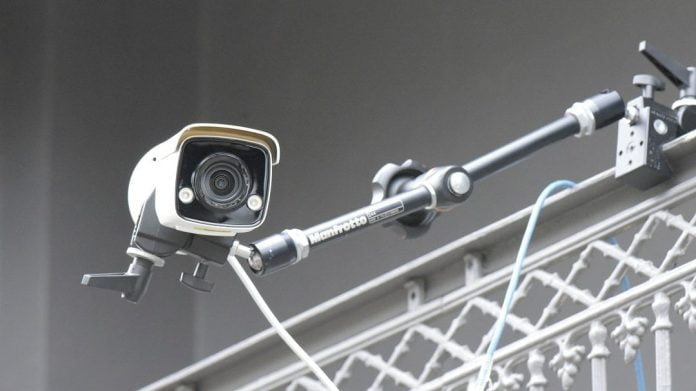Hikvision’s DS-2CD2T87G2-L ColorVu Gen2 fixed bullet camera features a very fast F1.0, 2.8mm lens (there are 4 and 6mm options), 60 metres of white light and 4K resolution, an all-alloy body rated to IP67, as well as the ability to handle strong backlight thanks to 130dB of WDR.
HIKVISION’S DS-2CD2T87G2-L ColorVu Gen2 is a capable fixed bullet camera with a solid specification, including a ½-inch sensor delivering 8MP (3840 x 2160 pixel) resolution, a fairly optimistic minimum scene illumination of 0.0005 lux in colour @ F1.0 with AGC on while unassisted, or 0 lux with white LED light activated, and a horizontal field of view of 102 degrees and a vertical FOV of 52 degrees from its fixed iris lens.
Central to functionality, the camera features Acusense technology, a deep learning algorithm able to distinguish pedestrians, vehicles and objects and report events based on rules around what they do. With Acusense, video clips are sorted into categories – people and vehicles – and users click a category and use time or location data to locate the clip. We met Acusense Gen 1 a year or so ago and really liked it.

Smart features include motion detection (human and vehicle), video tampering alarm, exception (network disconnected, IP address conflict, illegal login, HDD full, HDD error), Smart Event Scene change detection, deep learning function, face capture, line crossing detection, intrusion detection, region entrance detection, and region exiting detection.
DORI numbers for the 2.8 mm lens are detect at 96m, observe at 38m, recognise at 19m and identify at 10m. As usual for Hikvision, we reckon these numbers understate performance and our experience with the camera bears this out, with face ID in good light achievable past 12 metres. The longer focal lengths will do better than this – the 6mm is perfect for choke points, while the 4mm will excel in street applications.
Video compression options include H.265, H.264, H.264+ and H.265+, with sub streams being H.265, H.264 and MJPEG, while the third-stream option is H.265 or H.264. Bit rate range is 32Kbps to 16Mbps, bit rate control is CBR/VBR and there’s scalable video coding and a single fixed region of interest in main and sub streams. There’s the usual Hikvision swag of protocols and the camera supports up to 6 simultaneous users on live view.
API options include open network video interface (Profile S, Profile G, Profile T), ISAPI and SDK, and the camera can be programmed for up to 32 users with 3 user levels, including administrator, operator and user.
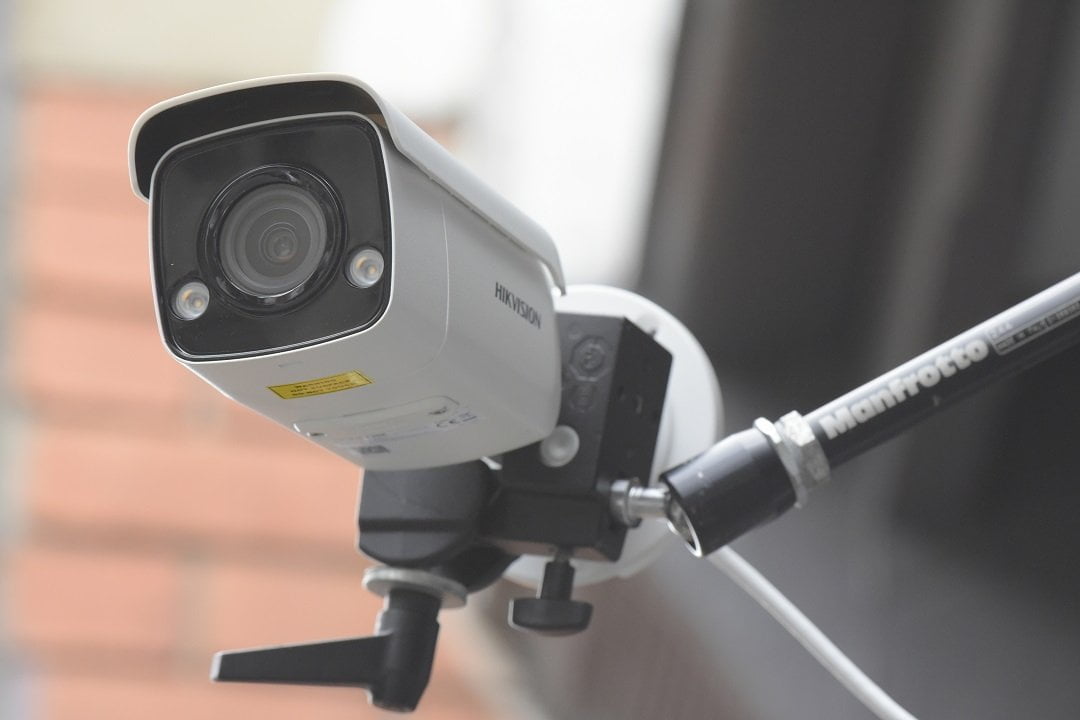
Security is comprehensive and includes password protection, complicated password, HTTPS encryption, IP address filter, security audit log, basic and digest authentication for HTTP/HTTPS, TLS 1.1/1.2, WSSE and digest authentication for open network video interface. Network storage is for NAS (NFS, SMB/CIFS) or you can leverage a built-in memory card slot supporting microSD/microSDHC/microSDXC/TF cards of up to 256 GB.
It’s also possible to upload image streams to FTP/memory card/NAS, notify surveillance centres, trigger record, trigger capture, and send email on event, and there’s auto network replenishment (ANR) and client options include iVMS-4200, Hik-Connect and Hik-Central.
Image settings include rotate, mirror, privacy mask, saturation, brightness, contrast, sharpness, gain, white balance adjustable by client software or web browser, and there’s day/night switch, day, night, auto, schedule, 52dB of signal to noise ratio, and image enhancements including BLC, HLC and 3D DNR.
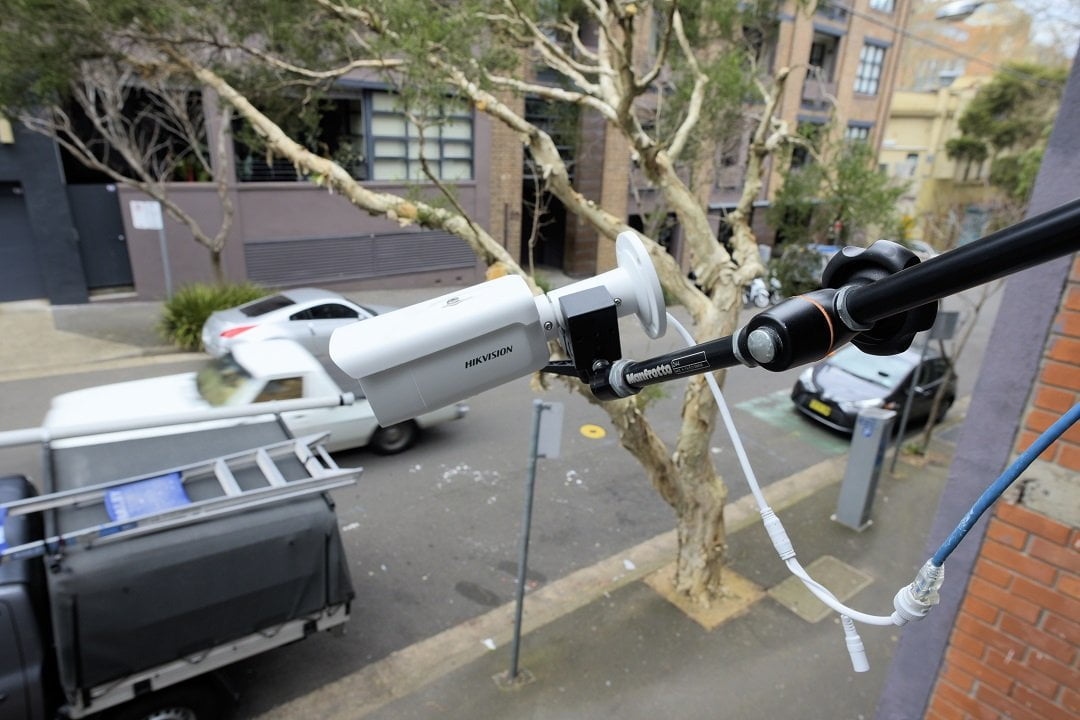
Basic event options are for motion detection (human and vehicle targets classification), video tampering alarm, exception (network disconnected, IP address conflict, illegal login, HDD full, HDD error), as well as smart event line crossing, intrusion, region of entrance, region exiting, including support for alarm triggering by specified target types – human and vehicle – and scene change detection. There’s a deep learning function and face capture.
Power demands are 12V DC with a current draw of 0.7A at a maximum of 8.5W, Ø5.5 mm coaxial power plug, reverse polarity protection, and PoE Class 3 with a current draw of 0.27A to 0.17A at a maximum of 9.5W. The camera is 385 x 190 x 180 mm in size, features IP67 rating against weather and dust, has a 0-355-degree pan a 0-90 degree tilt, a weight of 1.7kg and an operating temperature of -30 to 60C.
Test Driving ColorVu Gen2
We are testing the Hikvision ColorVu Gen2 on SEN’s test subnet – there’s nothing else on the network. The camera settings include a slight increase in brightness and slightly higher sharpness. I have WDR off and white balance is set to auto. The first thing I notice looking at the camera on a grey morning is barrel distortion – it’s 9-11 per cent. This is a fixed focal length lens and looking through the scene, I’d say it’s a very simple lens equation – there’s nothing in way of chromatic aberrations. Meanwhile, colour rendition is true, perhaps a touch low contrast.
The next thing that strikes me is the camera’s high resolution. This is a 4k camera, and that means I have more than the usual depth of field and more than the usual amount of detail deeper, as well as excellent detail levels close to the lens in medium to good light. This is going to give me better number plates and better face recognition. There’s serious depth of field, considering this is a fixed 2.8mm lens. I can see grass stems, layered reflections, can see through the window of vehicles on the street and look at what’s inside. There’s a lot of detail of pedestrians, what they’re carrying what they’re wearing, what’s on their feet, their fingernail polish, wristbands and more.
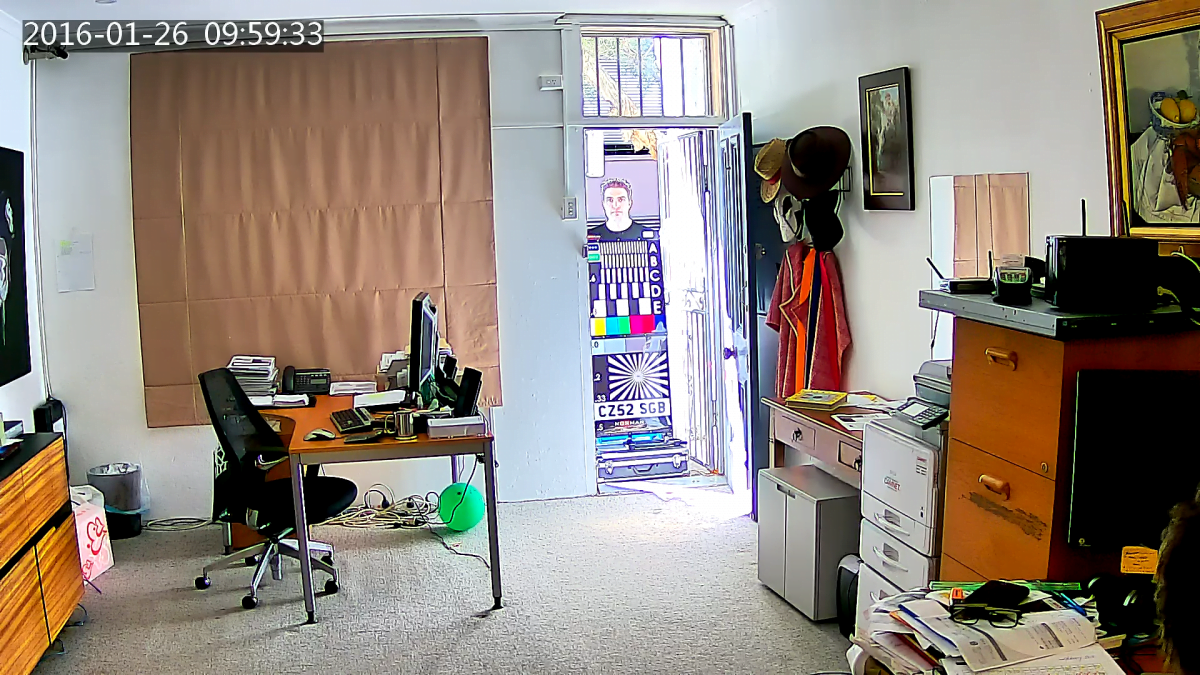
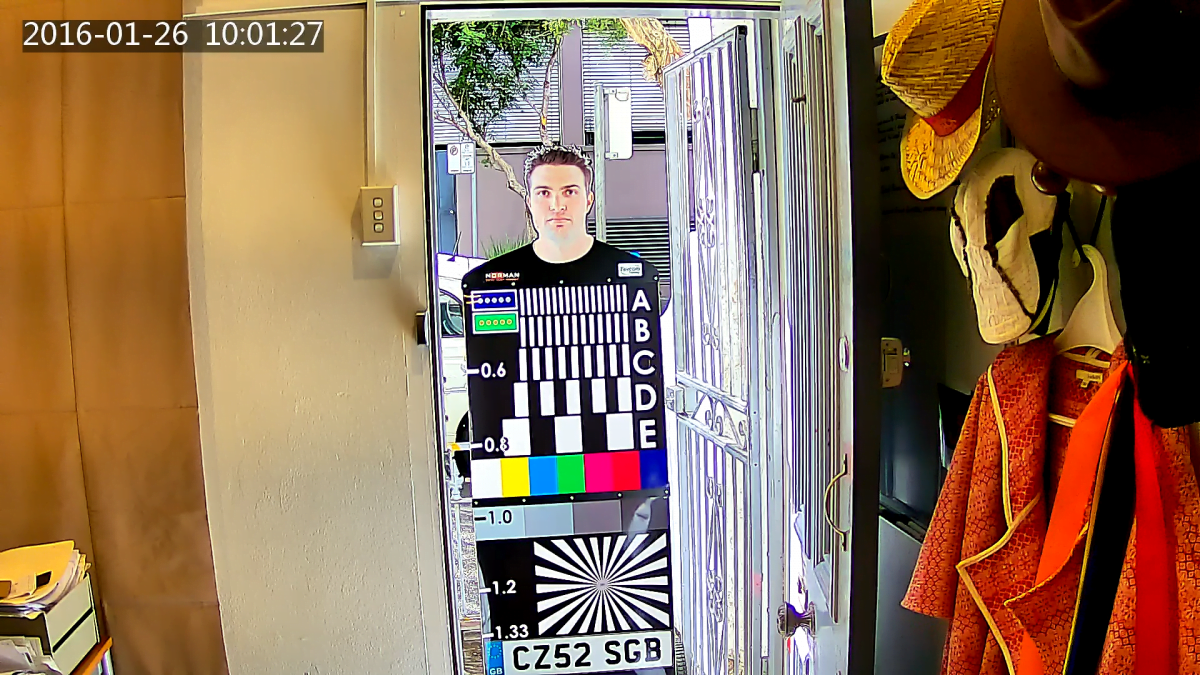
The 2.8mm lens is a good choice for an application like this one on a 4K camera. It’s a wide view without being so wide pixels are spread too much, though it’s hard to spread pixels too much when you have so many. I’m not getting moving plates in this low light, but I can see pedestrians at 50 metres, and I’ve got tons of detail close up. The images are free of noise, artefacts and pulsing. You’d be pleased with this if this was your angle of view, particularly if your requirements were for high levels of detail within 25 metres, with quality situational awareness further out.
There’s a touch of compression towards the edge of the images thanks to that barrel distortion but it’s more than acceptable and it’s not affecting the amount of detail you get of footwear, clothing hairstyle, glasses, carried items. Back in the sweet spot towards the centre of the lens you’re still getting tons of detail out to 40m. You can see what people are wearing, facial hair, skin tone, and when people are within 12m it’s really high-quality court admissible imagery. There’s no question about ironclad face recognition – it’s excellent.
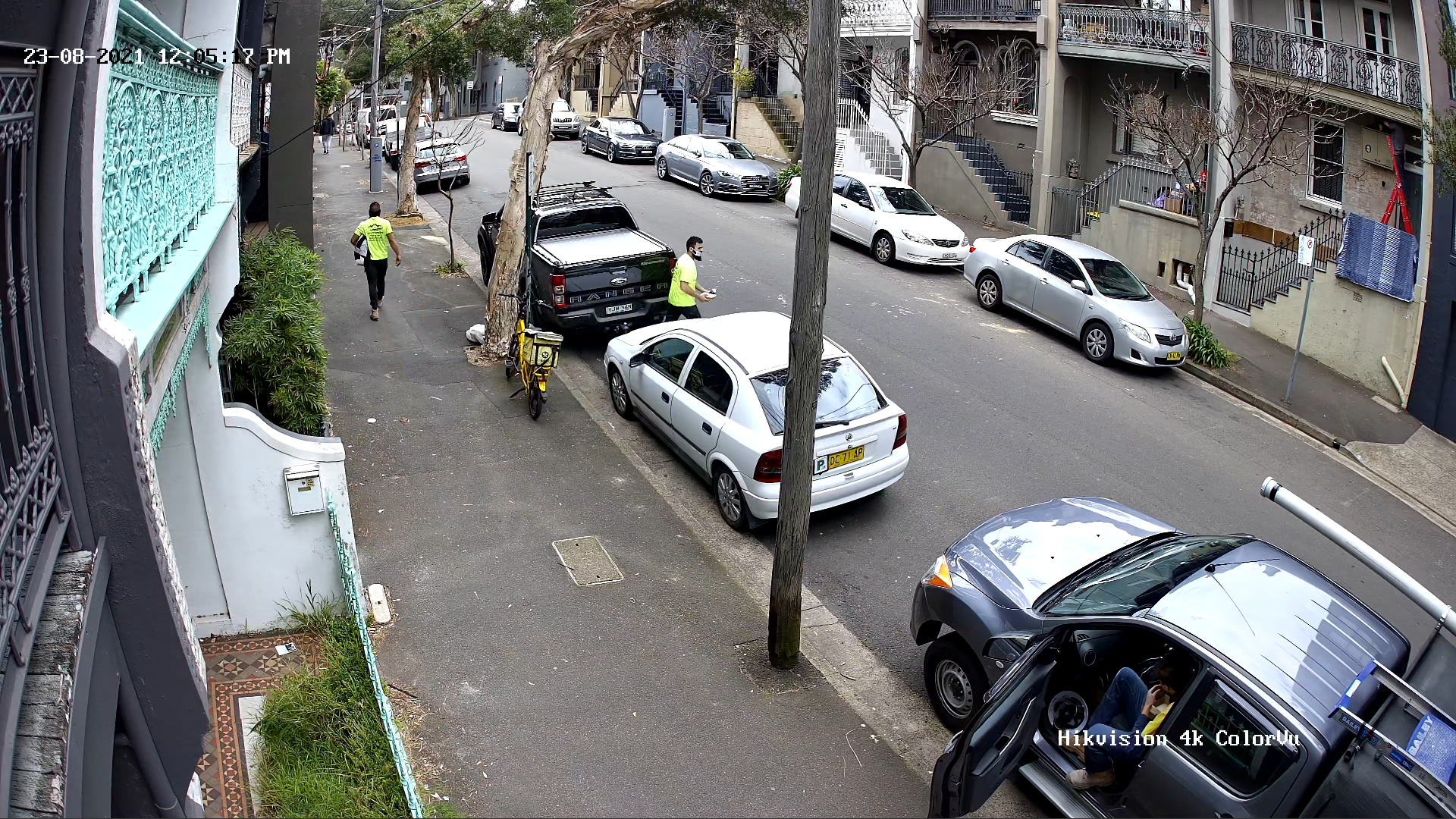
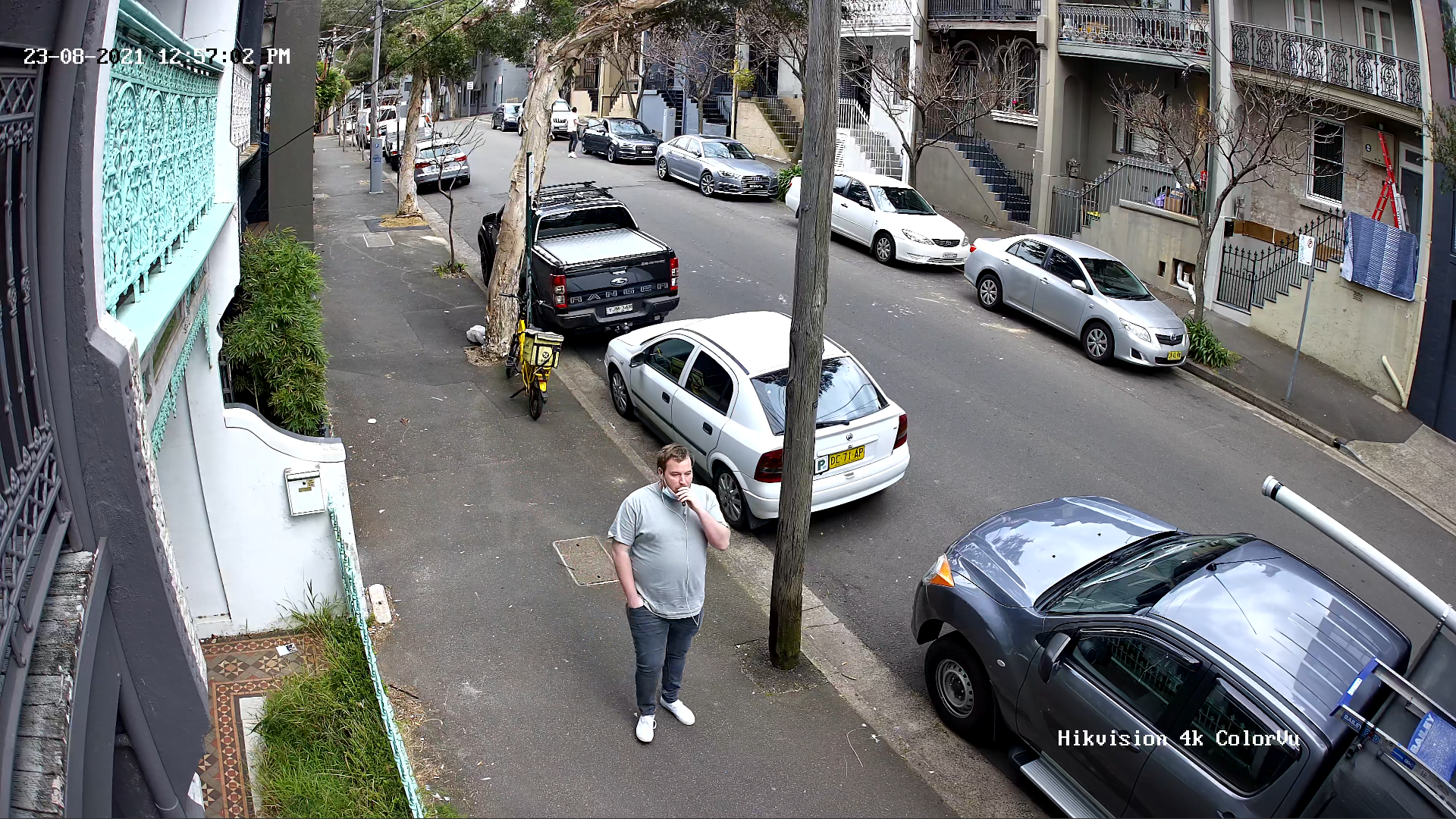
At one point I’m looking through the door of a ute where a tradesman is about tuck into his chips and hamburger – there’s nothing indistinct about the imagery – it’s pin sharp. A little later I have the tradesman taking a bite of his burger while another worker crosses the road with his lunch and yet another worker strolls up the street. Those whose faces I can see are court admissible to the 20m mark and the ones walking away from me show sufficient levels of detail in terms of footwear, clothing and carried items, to be identifiable. Deeper, I’m not looking into restaurant windows on the fast side of Albion Street, but I can see people moving around and there’s good situational awareness.
Next, I watch a person listening to headphones, taking a toke of his stainless steel vape, his face is court admissible behind a mask and in the background, I can see another person getting into a car. When a vehicle scoots by, I don’t have the plate, but elsewhere I can see footwear. Now there’s a woman going past with a dog, carrying a bag. Again, the face recognition is excellent at 2.8mm, and it would be even better at 4mm or 6mm with a tighter angle of view.
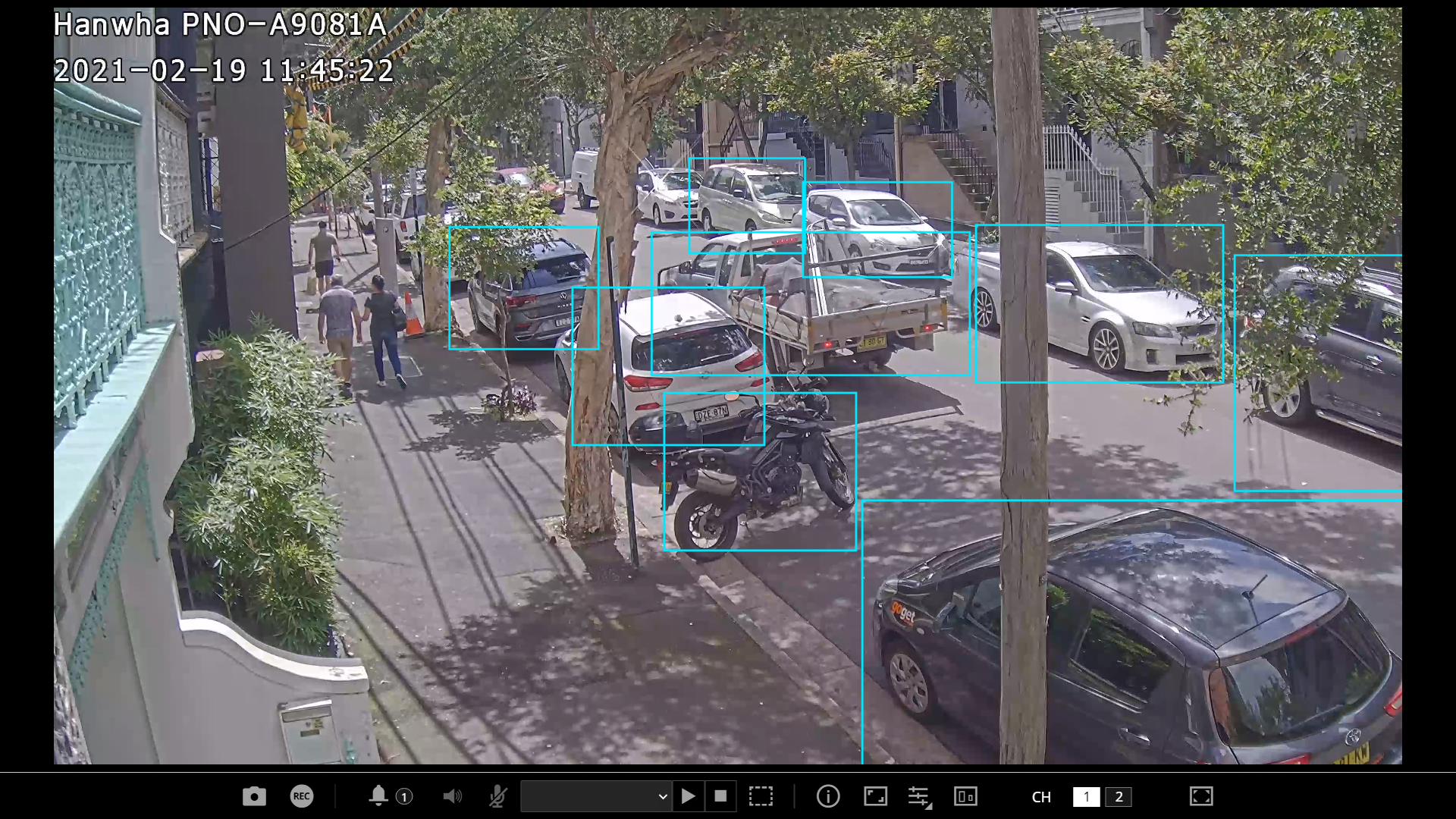
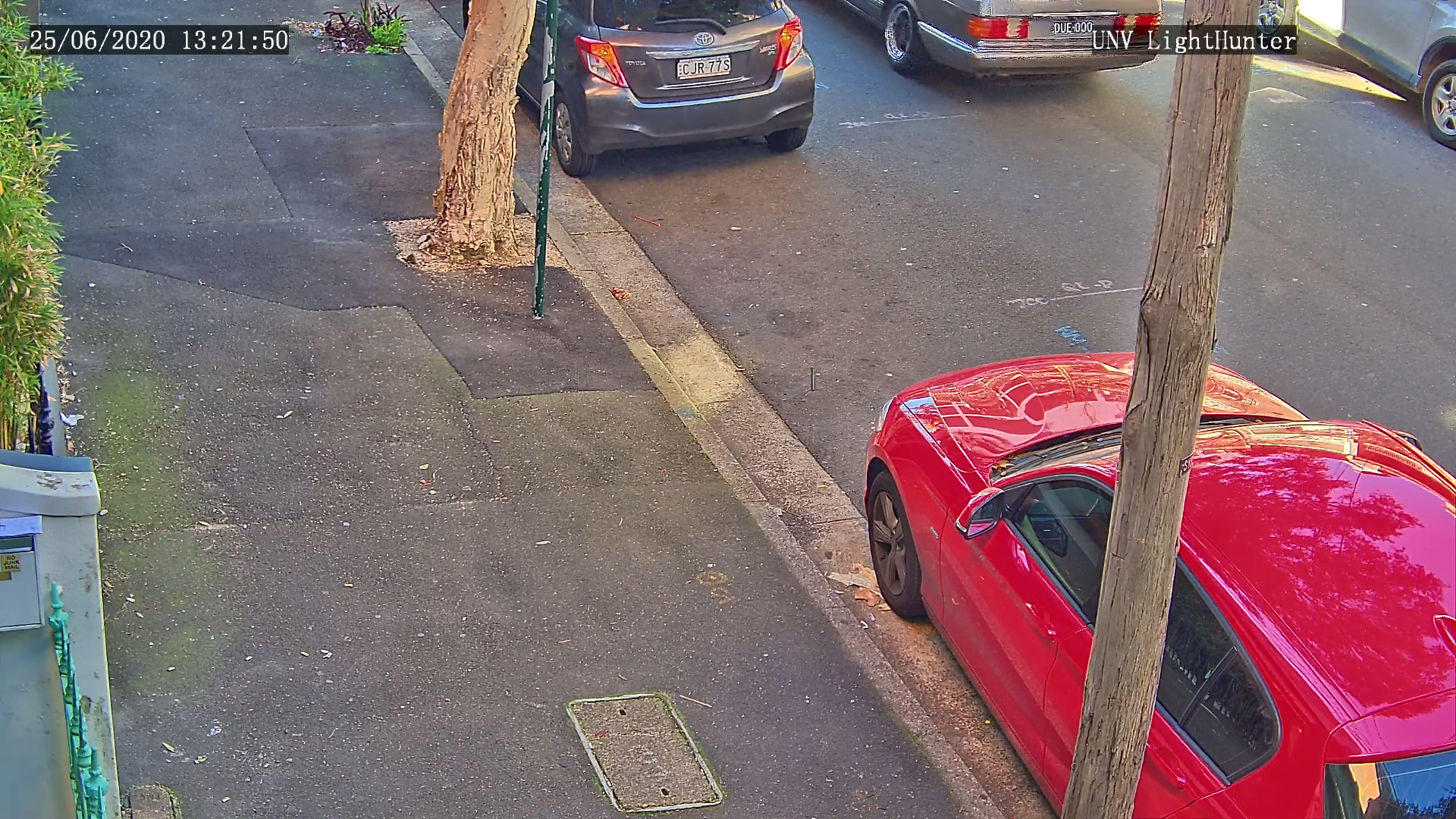
I keep being surprising by the levels of detail – in one image I can see the expression around a person’s eyes. In the same scene, I can see there’s a delivery truck blocking Albion Lane 60 metres further up. Another image has 4 people in it separated by 30 metres. A lady is walking past masked, but detail is sufficient to recognize her. I can see bands around her wrist, she’s carrying a smart device and a cup of coffee. There’s another lady coming behind with an ID tag sticking out of her pocket while deeper in, a man is walking away carrying a bag with his lunch in it. On the other side of the road is a bearded tradesman in his 60s. He’s taking the paint off the front of the house, wearing an old blue polo shirt and gloves.
A small truck goes quickly past while a tradie crosses the road – he’s court admissible even half turned away from me. I can see there’s a passenger in the vehicle going up the road – the colour of his shirt is visible as his elbow is sticking out the window. Past them is another person walking a dog. A lady gets out of her car. I’ve got the plate of a moving vehicle going by and the face of the woman. The light levels have dropped – this image is not quite court admissible. Next, a woman stands under the camera reading a map and everything she is wearing and carrying is highly resolved.

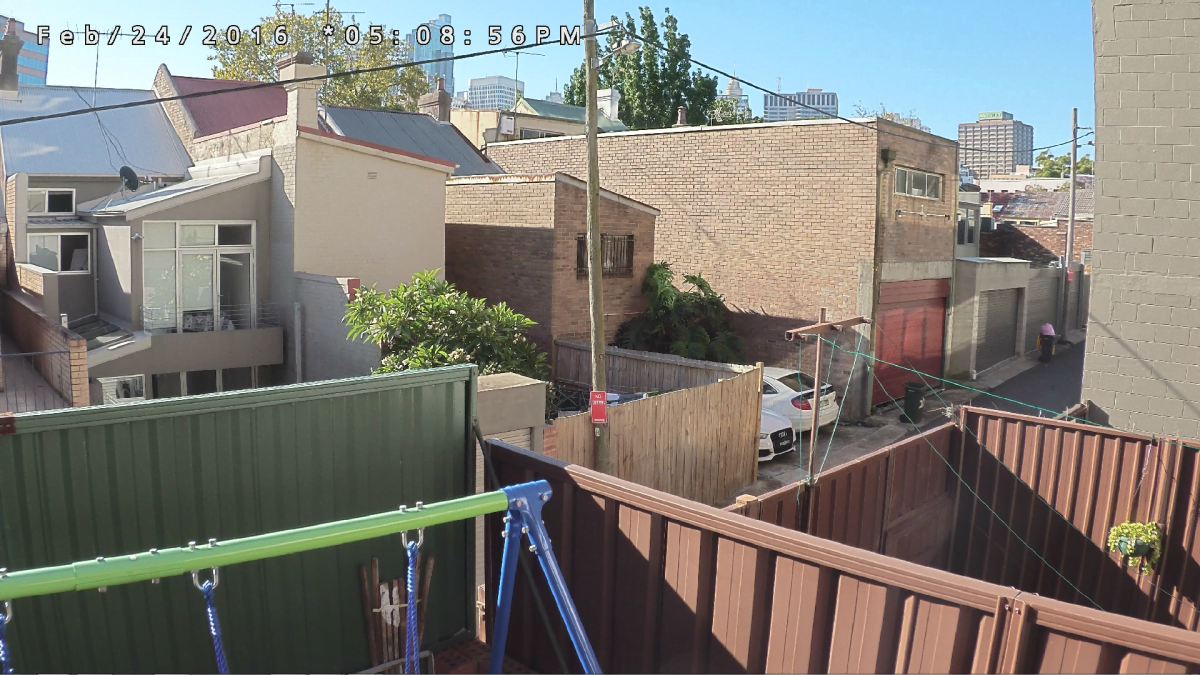
In the presence of stronger light – around 65,000 lux on the bright side of the street, the image can get a touch over exposed but after playing around, I prefer leaving WDR off and accepting the over exposure. The hot side of the street holds together and I prefer the look of it to the work WDR puts on the image in this application. Regardless, I have loads of detail. Static plates are a giveaway in terms of high detail, and I’ve got static plates to 25m – with a fixed 2.8mm lens it’s exceptionally good work.
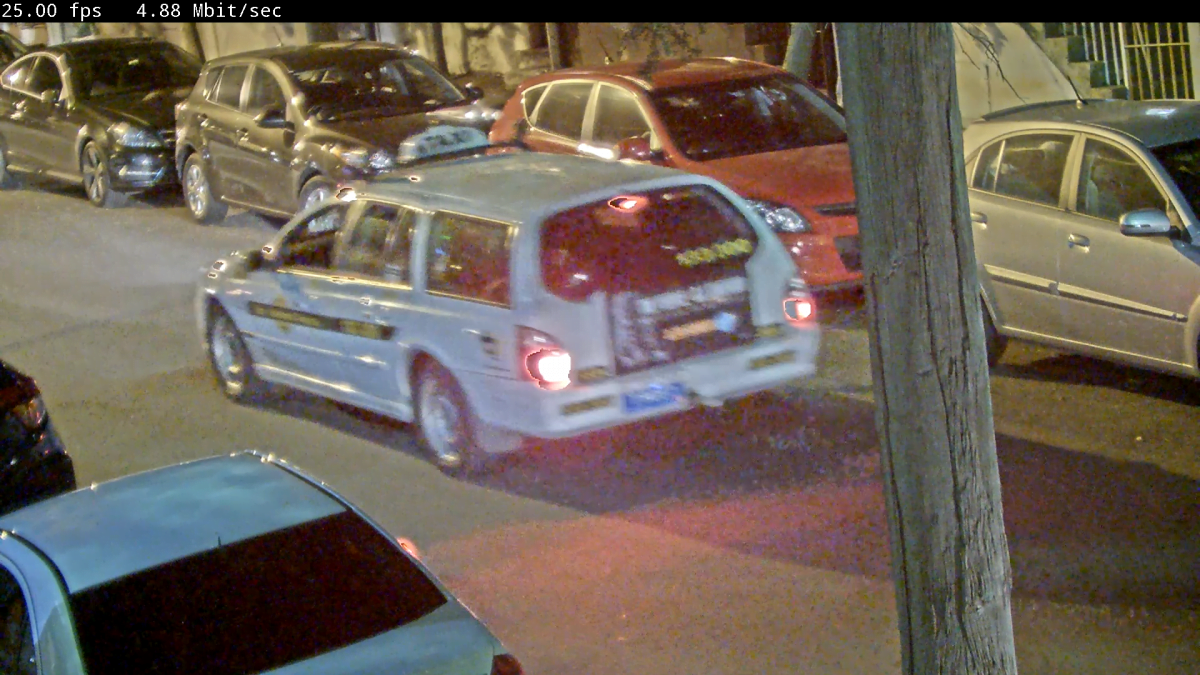
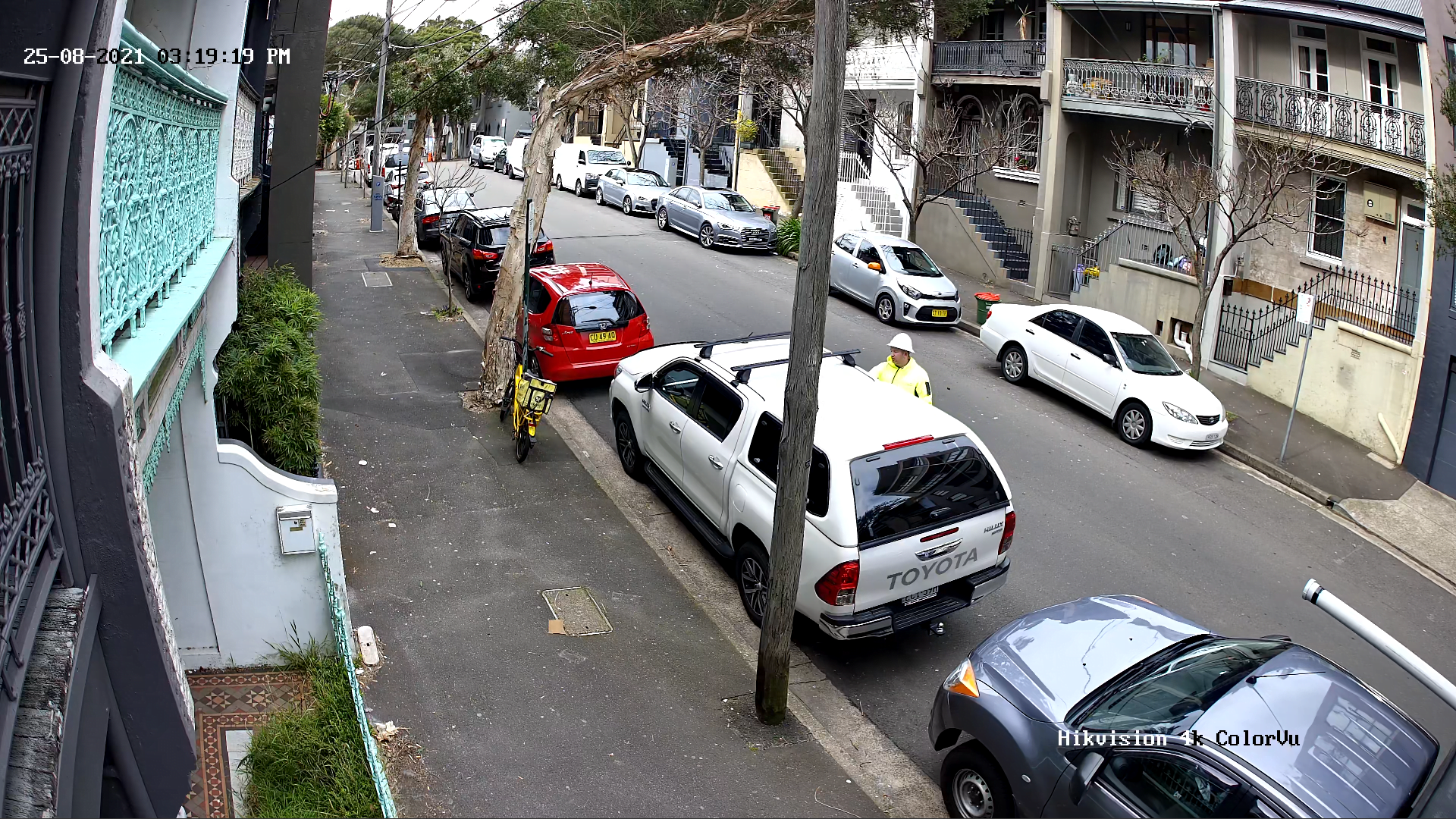
Later in the afternoon we start to get variable light. I’m not getting moving plates past 25 metres but a there’s lot of other detail in the scene. There are 3 people walking down the road. A lady wearing a duffle coat is court admissible, even masked, while a man behind her at around 13 metres is wearing Haviana thongs and tracksuit pants. He, too, is court admissible, though masked. And at around 35 metres from the lens there’s a man at a parking meter. A vehicle at about 18 metres offers me a plate.
Light fades away in the afternoon but camera performance is consistent. In full dark with white light activated I can see into the house across the road. The orange colour cast at the end of the street from the sodium lights is strong. Meanwhile, there’s a cooler but still warm-ish pink colour temperature nearer the lens from camera’s white lights, which are not the typical cool blue LEDs.
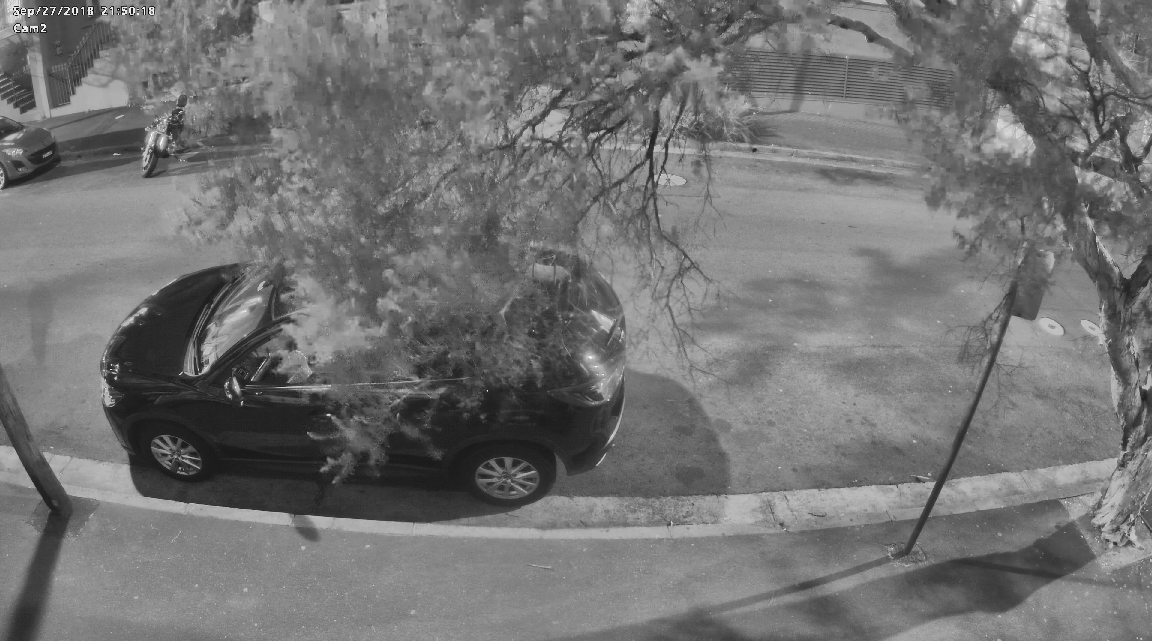
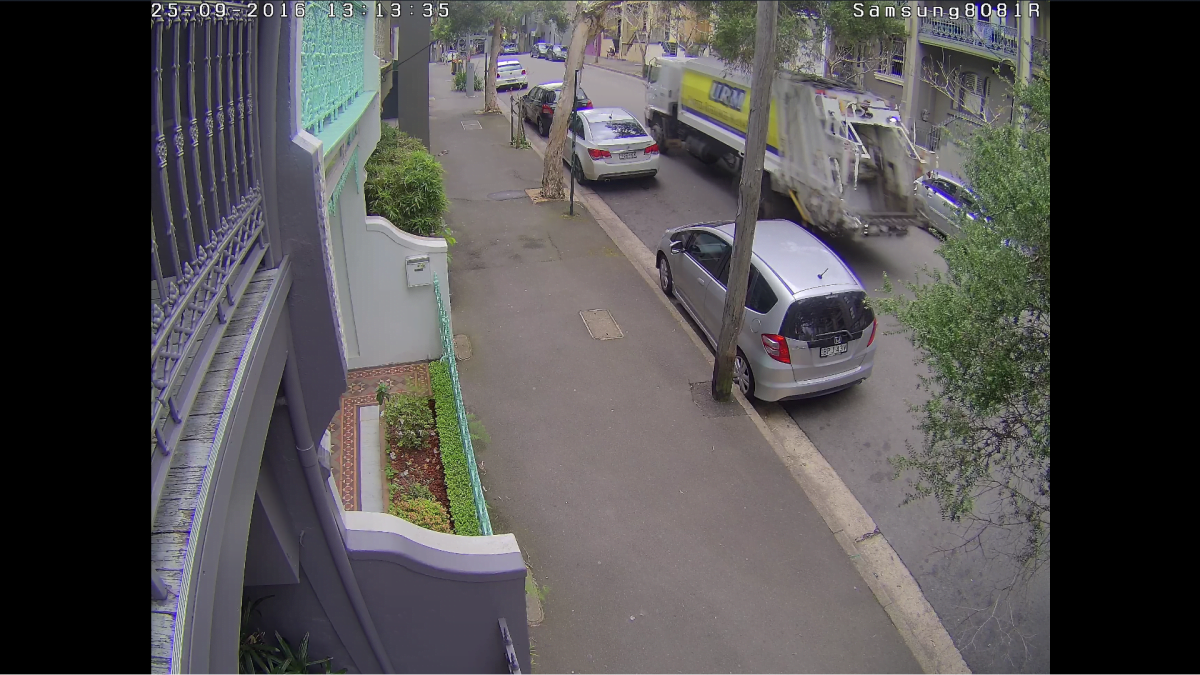
At this point, a vehicle comes by. I don’t have the plate – I’ve found the bottom of the shutter at 1.25th of a second, but I can see the car is a ubiquitous white Toyota Camry. A man walks past on the street, and I have near face identification, and can see wearing a jacket, blue jeans, a T-shirt on underneath. A vehicle goes up the road – it’s a Corolla sedan, I don’t have the plate, but it’s a maroon colour. Next, a big white van goes by and again, I don’t get the plate.
Next, I turn off the supporting light, and I’m happier with the rendition of the image in this light level. I’ve got my grey tones back, and the image is sharper, cooler, perhaps a little truer – still with the deeper orange colour cast and with loads of detail. It’s easy to forget when looking at this scene that we are sub-4 lux. A guy goes past over the road 20m from the lens. I can see he’s wearing runners, white socks, grey shorts, a white woollen jumper, a white polo shirt, has a haircut that’s clipped close around the sides, has dark hair, a mid-skin tone and is carrying a white plastic bag.
Conclusion
This is a fine bullet camera for street applications. There’s way more detail with this camera than you’d ever get with 1080p using a 2.8mm lens and it’s a big step up from the earlier Acusence turret. That’s important, because it offers huge support for the excellent analytic side, given the way the camera stacks events to make searches quicker. Better image quality makes Acusense even more capable, giving brilliant performance to 25m, even at night, and up to 40m during the day.
Build quality is typically strong – the housing is IK10 and IP67 – and this bullet is built and tested on one of Hikvision’s automated lines, so there’s no chance of sample variation. From the point of view of installers and end users who need something affordable and robust with no compromises in image quality, the DS-2CD2T87G2-L ColorVu Gen2 is impossible to beat.
#sen.news




